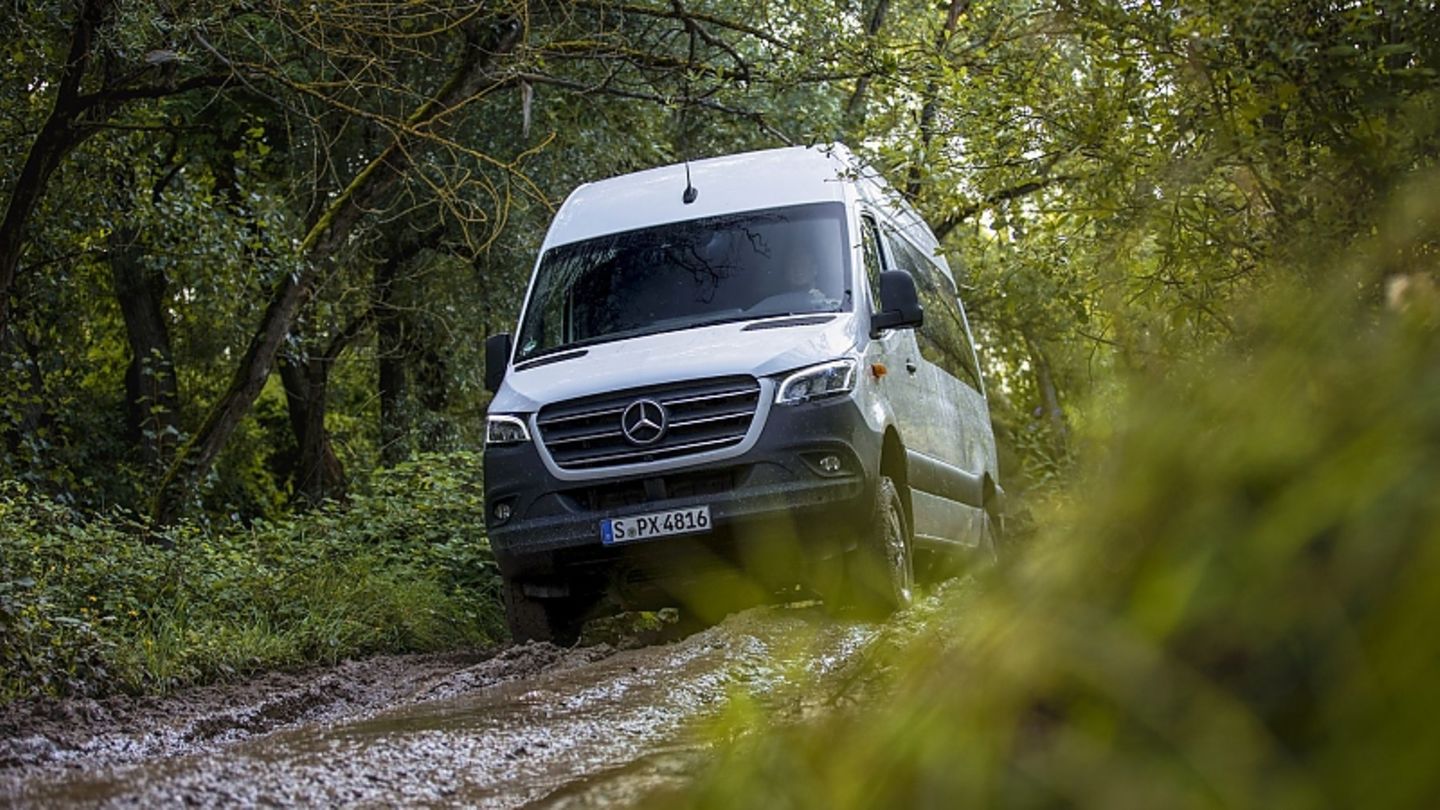The all-wheel drive version of the van now only has a diesel engine in various expansion stages and the all-wheel drive of the GLE with various adaptations. Even without a reduction gear, the off-road sprinter does a great job.
A four-wheel drive van sounds more like a toy than a suitable addition to a model range. But that is exactly what the Sprinter all-wheel drive sprinter is all about. As a work vehicle, it is particularly popular in the USA, where a van has to compete with pick-ups. And with them all-wheel drive is the standard. But customers on the other side of the Atlantic are not only asking for the four-by-four version of the Sprinter; in Europe too, companies that are active in the construction industry or those who have to move goods up a high mountain on snow-covered paths like to take advantage of it. “The Austrians and Swiss are happy about the Sprinter with all-wheel drive every winter”; says technician Sascha Belca. But above all, the all-wheel-drive sprinter haunts the dreams of motorhome fans, who build it themselves and want a handy expedition vehicle.
Salted prices
The off-road Sprinter has been on offer for a long time, but Mercedes is packing the drive train from the SUV GLE under the van at the turn of the year. That means a four-cylinder engine instead of a six-cylinder unit, a nine-speed automatic instead of one that has seven speed levels available and no more gear reductions. During our test drive, the new all-wheel-drive Sprinter shows that it is by no means a savings solution that has arisen on the desk of synergy-obsessed controllers. The van even climbs steep ramps with no problems with tires whose tread is covered with mud. Stop and start again? Forward or backward up the slope? No problem, the Sprinter masters the tasks set confidently and with impressive aplomb.
Electronics do it
Where the wheels used to spin briefly before they found the necessary traction, the tires now rummage calmly through the mud and do this job with ease. No roaring engine, no creaking, no pushing. The Sprinter 4×4 follows the fine commands of the accelerator without grumbling just once. The whole stunt goes on as a matter of course. Modern technology also helps downhill in the form of adaptive hill descent control, which is activated at the push of a button and adapts to the terrain. So that even hilly terrain does not become an insurmountable obstacle, the ground clearance of the Sprinter 4×4 is 155 millimeters higher at the front and 135 mm higher than the rear-wheel drive version. “Everyone who has to drive through high snowdrifts is happy about it. The Sprinter 4×4 is designed as a rough road and a traction all-wheel drive,” says developer Mirko Bänisch.
Perfect match
In order for the Sprinter to do all of this, hardware and software must be perfectly coordinated. It starts with the engine and the transmission and ends with targeted changes to individual components. The basis of the technical paradigm shift is the four-cylinder diesel OM 654 with 140 kW / 190 PS (the other variants have 84 kW / 114 PS, 110 kW / 150 PS or 125 kW / 170 PS) in conjunction with the nine-speed automatic. Due to the wider spread of the transmission, the first gear is almost exactly 25 percent shorter than the reduction gear used otherwise. The high starting torque of the diesel engine and the finer interventions by the control systems, which make progress on slippery surfaces more smooth than on the predecessor, are also helpful. This also applies to reversing uphill, an exercise that the off-road sprinter has to complete more often in everyday life than you might think.
The variable power distribution between the axles is now handled by an electronically controlled multi-plate clutch integrated into the transfer case. Until now, the torque distribution was set at 35 percent in the front and 65 percent in the rear. The front axle has been given stronger stabilizers to reduce the tendency to roll, which will be particularly pleasing to motorhome drivers, while the developers of the rear axle paid attention to the possibility of twisting. The advantage of the system is that it can also be used on the 5.5 ton version of the Sprinter, but on which the rear axle has a shorter gear ratio. Due to the weight of up to 5.5 tons, the technicians also had to use their own component for the front axle drive.
I am a 24-year-old writer and journalist who has been working in the news industry for the past two years. I write primarily about market news, so if you’re looking for insights into what’s going on in the stock market or economic indicators, you’ve come to the right place. I also dabble in writing articles on lifestyle trends and pop culture news.




